Grease Seals 10-36 (pair)

Thank you! Your comment has been submitted successfully. You should be able to view your question/comment here within a few days.
Error submitting comment. Please try again momentarily.
- All Info
- Reviews (897)
- Q & A (0)
- Videos (3)
- Photos
TruRyde Trailer Bearings Races Seals Caps - RG06-070
- Seals
- Grease Seals - Double Lip
- TruRyde
Trailer Hub Grease Seals
- Two 10-36 Seals per Package
- Double Lip Seal
- For single lip seal see # 42385
| 2.250 | 3.376 | E-Z Lube End Units |
RG06-070 Grease Seals 10-36 (pair)
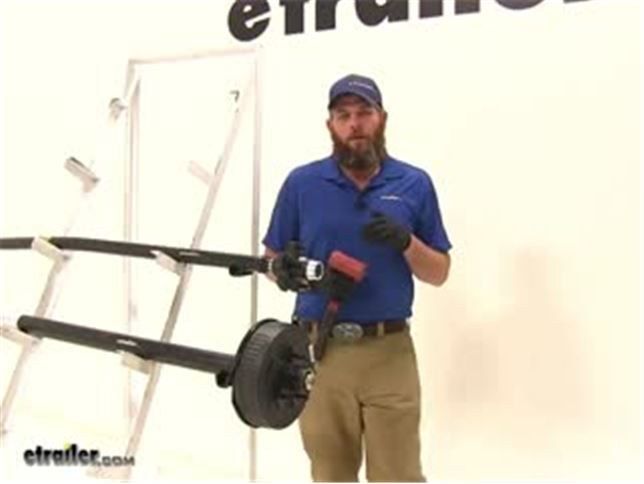

Videos are provided as a guide only. Refer to manufacturer installation instructions and specs for complete information.
Video Transcript for Trailer Bearings Races Seals and Caps Rebuild
Speaker 1: Today we're going to take you through the rebuild process on a couple of hubs. We've got an idler hub, and here we've got a hub and drum assembly. Works with electric rigs, but this can also work for just standard discs, if you've got a disc brake style setup.Basically what we're going to show you is how to get all of the bearings out. How to remove the seal. How to remove the race's if they're damaged, then get them replaced in the proper manner. We'll show you how to use an easy loop hub, which we have here.The first thing we are going to need to do is, get the grease cap off the end.
It can have either a rubber plug in it like this one does, or it can be a solid metal cap.These are pressed fit in there, basically by tapping on them on the back side. To remove them, a deadbolt hammer is typically what we're going to use. We're just going to start tapping as we go around. You'll see a little separation start right here, and slowly it'll work it's way off.Now the next step's going to vary a little bit depending on your axle setup. Do you see this is going to have a keeper that goes around the nut.
And that prevents that from being backed off, or removed. A lot of times you'll have a castle nut, which will have just little tabs that stick off, and there will be a cotter pin that passes through it. Just depending on your application, you need to get the keeper for the nut off. This style we just kind of pry out. A cotter pin you would just remove of course.Once we have that off ...
We'll start to take off the nut here, and the washer that's in behind it. Now yours should look a whole lot more dirty than this. There should be a lot of grease packed in, and through the hub, this one's brand new. We thought it'd be nice to show you the components before the grease was on .. Of our washer that comes off.And then here we're going to have our outer bearing.
Continue to pull that. We're gonig to have our inner bearing here. That sits in the backside of the hub. And we didn't put it in yet, we will show you how to put it in. But a seal would typically be covering the backside here. We'll show you how to use a seal removal tool, or another tool. To get that pried up and out. To get an access to that inner bearing.Now for a drum style like this, that process for disassembly is going to be just the same. One thing to keep in mind if you're using a disc brake setup. You'll have to remove the caliper before the disc is going to come off.Now once we have the spindle exposed, as we said this is going to be really greasy. We want to get all the grease removed, and the first thing we'll do is inspect it. We want to make sure that it looks just like what we have here. Everything's nice and smooth. We don't see any kind of discoloration, or any marring on the metal. Indicating that our bearing's got hot.If you do have any of those symptoms, at this point it's time to replace those bearings. You don't want to repack them. Get new bearings, and put in there. You might have a bearing that's come apart in here. Another surface to ensure is in good condition, is where your seal is going to go. That helps seal all the grease inside of our hub. With a damaged or broken seal, that grease is going to seep out. Either out of the hub, or in this case into our brake assembly.Now if your axle has brakes, we're also going to check the disc. Make sure it doesn't have any issues, or your hub. And this is going to be a hub and drum assembly. The brakes are going to ride on this machine surface. You're going to check that for signs of excessive heat, discoloration, or cracking. And this is our magnet surface. We'll check that surface for the same issues.Now inside the hub regardless if it's a disc brake, it's a drum brake like this. Or just a standard idler style hub. You're going to have an outer race. Would be right here, it's a small tapered piece of metal your bearing sits in, and rotates on. That's basically the outer portion of the bearing.You have the same thing here on the backside. This is called the inner race. Now if those show any signs of wear, overheating, or cracking. Those are also something we'll need to replace, which we'll show you how to do in just a minute.Now, with your brake assembly exposed, if you do have electric brakes like we have here. It's a good idea to check all the components for wear, cracking, maybe missing pieces. Check your pad thickness to make sure those are in good shape. Basically if you have a non working brake assembly and you put everything back together, you're just going to have to take it apart and do it all over again to get back to the brake assembly. This gives you a really good option to be able to change them out.And most applications are going to use a four, or maybe a five bolt flange to hold them in place. And you'll just remove the lock nuts, or sometimes you'll have a hex nut with a lock washer. You want to remove those, and then simply slide your assembly off after you cut the wiring.The friction material itself should also be checked for any kinds of cracking, or overheating. If you have any grease inside the system at all, it's likely it's gotten on those pads. It's a good idea to get those changed. Now as far as the removal of the races go, it's going to be just the same whether we're using an idler style hub like we have here. A drum brake like we have here. You can basically see where the idler is, here in the middle of the hub. It's going to go all the way around there, and we just have this extra material here to provide our braking surface.Now if you're doing a disc brake style job again, it's going to be just the same here with the races living inside of the actual hub portion. You'll just have the discs there for the brakes to make contact. We're going to use this little bit smaller one, it's a little bit easier to manage to show you how to get these out. We've talked about where the races are. The outer here, the inner being closer to the inside, but on the backside of the race there's a little lip. That lip's meant to stick out just a little bit further than the hub, and provide us an area to put our tool on, and help to drive that out.If you look all the way through there on that inner race, you'll see that little lip that sticks out just from the hub slightly, and it gives us enough area to use our tool on. Now generally to remove these you're going to use a punch, similar to this. Some guys will use a screwdriver. Or a piece of pipe. If you have a piece of pipe that's small enough to fit inside of that diameter, you can take that down through and allow it to rest on that lip.Use our punch, and then just need a hammer. And we'll start working that out. We're going to tap all the way around. Kind of equally, and evenly apply the force to get it to come on out of the bottom for us.You can see now as it starts to come out there's going to be a little gap created between the hub and the race. And we can just keep going, bringing it on out. Then you can inspect the inside of the hub surface there. Make sure no damage or anything has occurred, and repeat that same process for the outer race if you plan on removing and replacing that one.Now in the outer flat edge, you can see we're going to have our tapered edge on this side. If we roll our race over to the flat side, typically there's going to be a manufacturers part number on there. That will help you identify which race it is, that you need to go back in your system. If those are rubbed off, worn off, if you can't read them. You can measure the outside, to outside diameter of the race here. It's a good idea to use a micrometer to get it exact.Now here's your basic micrometer. And again, the outside of the race is what we're going to need to measure. You want to go . I set the thickest point there. Looks like this one's going to be about 1.98. That's going to be the measurement you'll want to supply.Now while we've got this out, let's also look at the proper way to measure our bearing. Instead of the outside for the bearing, we need to measure the inside diameter. That's going to be pretty simple. Let's pull that out, find the largest measurement we can. Which here, looks like it's going to be 1.03. With that information, we'll be able to get the correct bearing, and the correct race, so they'll fit together properly and make a full bearing kit for us.Now here's the race, we're going to show you how to get this put back in. Basically just going to press fit inside of our hubs. We need to get it down on there. Kind of like that. And you'll have a couple options. A lot of times you're going to see do it yourself or at homer, just going to use a wooden block. Just place it on there. That's going to get you started, but at that point you'll struggle in getting it to go all the way down into it's seat.Now to take care of that problem, there are several seal drivers that are available. Seal and race drivers that are available out there on the market. It's designed to fit down inside of our race, inside of our hub and get it down there where it needs to go. This is part number ptw83020, has several different sizes, even if you have multiple trailers it's going to do the job.Now the side with the angle on it, is designed to fit down inside of our race. If we use the other side, that's going to be for driving your seal into place. Just want to hold it, and take it on in with your hammer. You'll see, you just want to insure that our race is all the way up against that line on the hub where it's supposed to mate to.Now when it comes time to pack your bearings you're going to have several different ways of doing this. You can just use your hand, is the traditional method. That's going to be the method probably reserved for the very occasional trailer work kind of situation. If you do it once or twice a year, probably get away with it that way.Next you would go to a, kind of a sandwich funnel style almost. If you look inside of there, you can see the bearing. It's located between the two pieces. Just use a grease gun. Start filling that with grease, and that's going to fill our bearing for us. And the third, with this one you're just going to place your bearing down and in. It should be pretty close to center. And then we've got our cone her that's going to go down and secure that.Now I think this style, wastes a little bit more grease than what this style will. This has a dust cap. You can see, you can keep your grease in there, put your dust cap on there and save it for later use. This will be if your going to do it every couple years. And this particular style would be if you're a more regular user.Let's start by showing you how to use a bearing packer. Similar to this. Again, we've just got our grease inaudible 00:11:07 here on the top. And then just slowly start to fill it. Now I like this style quite a bit. I think even regular users might enjoy it, because you can get a really quick visual look at that bearing. You're not going to have to overdo it, or have to much grease.You can kind of see in there now, we're starting to get grease to come out of it. Couple more pumps, we'll be good. You can see we've got grease coming out all the way around. Where all of our bearings are. Got a little bit of excess there. Just take that around the outside of it. And then we should be able to lift it off. And now you can see what we we're talking about. Just a little bit of excess there, that you're just going to wind up wasting.Now we'll take our bearing, we're going to place it right down in our race. And then we'll cap off the back with our seal. Right now our seal's going to fit in just like our race did. It's going to have a little bit of a pressure fit to it. Now very often in this situation, I see people using the four by four method. Kind of here, just placing that on and tapping it. As an option though, if you do have one of these. You can see that's designed to fit right on the top of the seal. And help drive it in.The biggest thing here is, just going to be getting it driven in squarely. You can see, this side's in a little bit further than this side. I'm going to start this side first. Now since we didn't have the opportunity to show you before, we're going to take a look at pulling a seal. Now this is a seal puller, we carry this on our website part number ptw1219. This is meant to hook underneath the seal. And then you kind of pull up on it, and just like our race you'll have to work all the way around that edge. Just bringing it out a little at a time.If you don't have that available. Another option would be a screwdriver. You just kind of get that under the seal, and turn it. And see, that'll allow you to also pop that out. We've taken care of our race. Our inner bearing. Our seal. The last component, before we put our hub back in place is going to be our outer bearing. Now with this bearing, I'll show you the hand packing method.This is definitely . Slightly dirtier method than the bearing packer. When we get grease on our hand we want to look at the larger side of the bearing. This is the smaller side. We have a larger side In between the inside and outside there's a gap. We can see our rollers in there. We want to grab that, and use that gap and shove grease inside of it. Now this is going to take a little bit, you want to work in the same spot until you get the grease pushed all the way through. We can see on the top there we've got a little bit starting to come through.And once we push it in the bottom, and you see it start coming out the of the top in those little drips, it's going to indicate that, that section's fully packed. Just need to work all the way around their outside edge now and do the same thing. Alright, once that's all the way around . The bearing will be ready for use.Now one more thing I like to do. We can see our inner bearing there, and our outer bearing. Well between the two, got a pretty big gap in there. If you'll take a . Pretty good amount of grease. We're just going to go all the way around. See how we can go all the way around the inside and just line that really well. The more grease we have in here, the less chance we have of any moisture getting in there, which can cause corrosion, rust, pitting. Pretty much things we do not like when it comes to bearings, races, and hubs.Put plenty of grease in there. And then this one does have the easy lube spindle, that'll even fill it in more. Now we can get our assembly slid on. I like to keep my thumbs on that outer bearing, just to prevent it from . inaudible 00:15:28 pushed off there. Now we can put on the original hardware that we removed, in taking off our hub the first time. In our case, we had our washer and our nut.Now most commonly you'll see pliers similar to this being used. We basically want to get that tightened down. Once it's fully tightened down you'll feel some resistance in the hub. We back it off just slightly. That'll give us a little bit more freedom of motion there. Something you don't want however . Is any movement in, or out on your hub. You want to be sure that everything is compressed, and you don't have what's called end play. Which would be the play in and out.Once we've got that set, then you'll put on whatever tight keeper yours came with. Get that put back in place. Now with an easy lube style hub, you're going to place your grease gun on the end, and then you can just fill the remainder of that hub up.Now for your typical applications, you're either going to have a solid cap, or a cap that'll have a rubber plug in it. A solid cap's going to be for an axle without the grease inaudible 00:16:51 here on the end. Goes on there. Just knock it on with your rubber mallet. Same with the one with the plug. Just gives you a removable area there, be able to cap that off.We'll show you how to put that on. Now as alternatives as well, a lot of times on boat trailers and marine kind of situations. You'll see a bearing buddy. This is going to apply a little bit of pressure on the grease, you'll fill it up. This kind of comes out just a little bit. That applies constant pressure on the grease to make sure we don't have any air, or anything like that. Then there is also an oil bath hub available. Now this is going to be for use with seals that are going to be designed specifically for oil bath use. You'll have to change that seal.We're using a double lip seal. There are also single lip seals available. Of course a double lip seal is going to give you just a little additional security. Keep that in mind when you order. But let's get this knocked on there now so you can see how that works. We just want to take the cap, we're going to center it. This is going to be very similar to what we did with the seal. And then just gently start tapping it around the outside. And it'll seep down on there for you.It's really going to be the same thing that you'll do with any of the end caps. Now with this side done, it's a good idea to take care of all the other hubs. Get them all on the same maintenance schedule. And as long as you'll periodically check the grease, take your trailer out for a trip occasionally. Just to keep everything lubricated. It should extend the life of these parts, and give us years of good service.
Customer Satisfaction Score:
99% were satisfied with this product
1% of customers were not satisfied
- Wrong item was ordered
- etrailer mistake
- Product did not meet expectations
Customer Reviews
Grease Seals 10-36 (pair) - RG06-070
Average Customer Rating: 4.8 out of 5 stars (897 Customer Reviews)
The brake kits were Tru ride self adjusting brakes, we recieved three of the correct hub kits and one different brand manual adjust. When we tried to return the incorrect item we have to send back the entire order to get it corrected. Too much of a hassle so we ordered another Tru ride kit. Customer service is great and very knowledgeable; however, the people working in shipping need more training as this is the third order in a row we have had problems with.
Items arrived when promised and in perfect condition. etrailer.com has never let me down. Had the items installed a few hours after delivery.
Items arrived on time with my brake assemblies. Items fit as they should into the brake drum. No problems.
Etrailer always has what I need for my RV, it's easy to order and parts have always arrived in time.
Kimberly was a knowledgeable contact that provided me with the correct grease seals for my Kodiak 12" integral hub rotors

Excellent product from a very good company to deal with. My go to for all my trailer needs
We have had great experience with eTrailer, These parts came in as described.
What a wonderful experience dealing with Etrailers. Amy was outstanding in her service to me. Patient, friendly, and wanting to help me solve my problem.
The grease seals I ordered were spot on. I used the first one today and it fit perfectly. I filled the hub with grease and the seal held perfectly. Happy Boaters referred me to you and I can’t thank Dave enough for doing so. For future trailer needs, Etrailers will be my first stop. Thank you so much!!
Just got the seals & they look great. I'll be putting them on in the next few weeks.
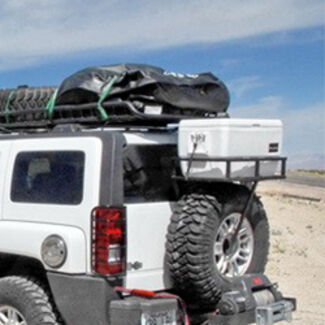
Jim

4/22/2024
The seals are still working fine.
One seal was missing spring, so be sure to check before you install. I noticed it on the 3rd one so hope the first 2 were good. etrailer sending another no problem. Glad I ordered a couple extra to have on hand, would recommend doing the same.

the parts were sent in a timely manner and everthing fit and worked perfect i am totaly pleased with etrailerparts and personel..!
Perfect fit. Installation was straight forward.
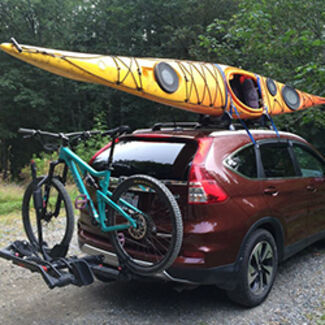
Tommy

11/11/2023
No problems. Would buy again.


Tommy

11/17/2023
Excellent. No leaks.
Received package 4 business days after ordering. Confident the double lip seals will seal better.
Bought as a back up set to have in my tool kit just in case, seem fine like the last set I put on during a bearing change, no damage during shipping.
Only received 2 out of the 4 that were ordered.


Katrina D.
4/18/2024
It seems that you only ordered two the first time. However, I do see that you have two more on the way. When you receive them I would love to hear your updated feedback.

E-trailer has been a great resource for getting the right trailer axle parts for me, for years. These seals worked great.
A must each time you remove hubs. Always replace seal

1 out of this pair ordered leaked all over the brake linings. This was not the first time this has happened. So this time I made sure not to use the easy lube fitting on the axles at all. I only hand pack the bearings.
Your web site is easy to search and your delivery was fast. The trick with ordering on line is knowing what you need. I’ve now used you twice and both times went very smooth.
I guess I didn’t realize seals came in the bearing kit. Now I have extra seals. That’s okay.
thank you very much for your prompt del ivery.
Exactly what I needed.
Good customer service
Great price, easy install, and much more affordable than anything I could source locally. Will see in the long term how they stay sealed up, but nothing about them raises any concerns.
Arrived quickly and was the correct seal so your database is right on
See what our Experts say about this TruRyde Trailer Bearings Races Seals Caps
- Axle Seal Replacement for AL-KO T52 Trailer AxleYour AL-KO T-52 axle has # 42 spindles that use hub assemblies with a # 25580 inner bearing and # 15123 outer bearing. The grease seal most often associated with this bearing set is part # GS-2250DL for 1 seal or # RG06-070 for a pair.
view full answer... - Availability of Dexter Hub Kit with Grease Seal Having 2.25-Inch I.D. and 3.376-Inch O.D.We do not offer the Dexter hub kit # 8-201-9UC3-EZ with a 2.25-inch inner diameter grease seal but this seal is available separately and you can order it to substitute for the included seal since both have the same outer diameter of 3.376-inches. We offer a pair of 10-36 double-lip seals with 2.250-inch inner diameter and 3.376-inch outer diameter as part # RG06-070.
view full answer... - Determining Which Replacement Grease Seals Fit Dexter Axle Model D52 On 2000 Shasta Pheonix 278BHThanks for the information on the axle of your 2000 Shasta Phoenix 278BH Travel Trailer! My contact at Dexter was able to confirm that your axle uses grease seals # RG06-070. They also mentioned your axle uses inner bearing # 25580, inner race # 25520, outer bearing # LM67048, and outer race # LM67010. If you are needing bearings and seals you can purchase the Bearing Kit, LM67048/25580 Bearings, 10-36 Seal # BK3-300 for each spindle as it includes each of the components mentioned above.
view full answer... - Grease Seal For Dexter 7,000 lb AxlesSure can; the correct grease seals for your 7,000 lb Dexter axles are the following: - Grease Seals 10-36 # RG06-070
view full answer... - How To Upgrade a Dexter D60 Axle To Use 8 on 6-1/2 Inch HubsIn order to upgrade to the 8 on 6-1/2" lug pattern on your Dexter D60 Axle you will need to use the Dexter Trailer Hub and Drum Assembly part # 8-219-4UC3-EZ or the Dexter Trailer Hub and Drum Assembly part # 42866UC3-EZ. The former uses a 2.125" grease seal whereas the latter uses a 2.25" grease seal. If you send me the serial number on your axle I can confirm this for you or you can order Dexter Trailer Hub and Drum Assembly part # 8-219-4UC3-EZ and then buy the Grease Seals 10-36 part...
view full answer... - Using Gasket Maker on Grease SealsUsing the gasket product is not really necessary, as the 10-36 double lip seal will do a good job of keeping the grease in its place unless the hub is being overfilled with grease. If you are dealing with a idler hub with no brake assembly or brake mounting flange on the axle, applying some of the product to the seal AFTER the hub is in place on the spindle would be fine, but placing the gasket product on the seal before the hub is slid onto the spindle could cause the gasket material to...
view full answer... - Replacement Grease Seal for 7k Axle of 2016 Grand Design ReflectionHey Larry, based on your axle capacity being 7k and your wheel bolt pattern being 6 on 5-1/2 inch the correct grease seal is the # RG06-070.
view full answer... - Correct Grease Seal Replacement for AL-KO 7,200 Lb AxleThe AL-KO 7,200 Lb Axle most likely uses the 10-36 Grease Seal part # RG06-070 which is 2.250" I.D. and 3.376" O.D. or the 10-10 Grease Seal part # RG06-090 which is 2.125" I.D. and 3.376" O.D. Therefore, you will need to measure or cross reference the old part number.
view full answer... - Seal Recommendation for 5th Wheel Trailer with 5,200 lb AxleYou will want to measure your spindle to make sure (see accompanying photo) but the double lip grease seal that fits Dexter axles that are rated for 5,200 lbs - 7,000 lbs is # GS-2125DL. If you look at the photo you will want to use a digital caliper such as # PTW80157 to measure where the letter "B" is on the spindle; that will be the inner diameter of the seal. If yours measures 2.125 inches then # GS-2125DL will be the correct seal for you. On occasion your axle will have an inner...
view full answer... - Grease Seal For A Dexter 57920 Axle I reached out to Dexter with the axle tag you provided and was able to determine that your grease seal is the Grease Seals 10-36 (pair) # RG06-070. If you need any other components please submit another question and I'd be happy help.
view full answer... - Replacement 12 x 2 Inch Electric Trailer Brakes for 5,200 Pound Trailer AxleIt looks like the brake assembly in the picture has the standard 5-bolt pattern found on 5,200 to 7,000 pound axles. it is hard to say if it is a Hayes assembly or something else. There may be a logo or other information stamped into the back of the assembly. Brake assemblies # AKEBRK-7L-SA and # AKEBRK-7R-SA have the same mounting pattern and work with 5,200 to 7,000 pound axles. These brakes also fit a 12 x 2 inch (inner) drum so the ones you have would work. But if they are worn enough...
view full answer... - Will The 7,000LB Axle Work as a Replacement For a Bent 6,000LB Axle With 4" Drop and 95" Hub Face? Yes, the Trailer Axle Beam # e95GR which is rated for 7,000lbs can be used as a replacement for your 6,000lb axle. These size axle do use the same #42 size spindle which has a 1.75" inner diameter on the inner bearing and 1.25" inner diameter on the outer bearing. There are some manufacturers who use different inner diameter grease seals for the spindle. The new axle is designed for the Grease Seals # RG06-070 with a 2.25" inner diameter. So if you have the smaller 2.125" inner diameter...
view full answer... - Difference Between Trailer Grease Seal Part Numbers RG06-070 and GS-2250DLThe difference between the two part numbers you mentioned is the quantity of seals that comes with the part number. Part # RG06-070 is for a pair of seals whereas the part # GS-2250DL is for an individual seal.
view full answer... - Replacement Oil Bath Hub Seal for 22333TCThe correct replacement grease seals for your # 22333TC seals is part # RG06-070 for a grease hub or part # 9103309 for oil hubs. This includes two double lip seals and they have the same inner diameter, outer diameter and thickness as your current seals.
view full answer... - Is There Differnce Between Trailer Grease Seals 10-36 and GS-2250DLThere actually is no real difference. They have the same dimensions, fit the same applications, and are both double lip seals. Our part number for the 10-36 is the # RG06-070.
view full answer... - Replacement Grease Seal for Trailer with TieDown 46304 CaliperThe 46304 calipers are used on axle capacities between 3,500 and 6,000 lbs so that's not quite enough info to determine what seal you'd need. If you have a 3,500 lb axle you'd need the seal kit part # RG06-050. Now if you have a 5,200-6k axle you'd want the part # GS-2125DL if the spindle has an outer diameter where the seal rides of 2.125 inch. If that dimension is instead 2.25 inch you'd want the # RG06-070.
view full answer... - Replacement Grease Seal for National 413470 SealYour National seal 413470 has an outer diameter of 3.376 inches and an inner diameter of 2.125 inches. For a replacement we have # GS-2125DL for one seal or # RG06-090 for a pair. These are all double lip seals.
view full answer... - Replacement Bearings and Seals for Dexter Axle 8-219 Hub and Drum AssemblyThank you for all of that information, it really helps boil down what you're needing. If you're wanting to replace the entire hub and drum assembly then you can use part # 8-219-4UC3 for a standard spindle or part # 8-219-4UC3-EZ if you have an EZ Lube spindle. These come with grease seals for a 2-1/8" diameter spindle so if you have a grease seal that uses the 2-1/4" inner diameter you'll need to swap out the grease seal with part # RG06-070 so that it fits properly. The electric brake...
view full answer... - Replacement Grease Seals for a Dexter 6,000 Pound Trailer AxleThere are several different hubs that could be used on a Dexter 6,000 pound axle so to make sure that we get you the right seals the first time I would need to know the inner and outer bearing numbers stamped into the sides of the bearings. You will likely need either # RG06-090, which has a 2.125 inner diameter and a 3.376 inch outer diameter, or you will need # RG06-070, which has a 2.25 inner diameter and 3.376 outer diameter. The 2.125 inch seals can be used in place of the 2.25...
view full answer... - Replacement Trailer Axle Grease Seal for 2009 Forest River WildcatHey Matthew, so we know your 2009 Forest River Wildcat would have an axle capacity of between 5.2k and 7k so the grease seal is going to have an outer diameter of 3.376 inch but it could have one of two inner diameters. If its 2.125 inch you'd need the part # GS-2125DL or if that dimension is instead 2.25 inch you'd need # RG06-070. We don't have a way to know for sure what inner diameter seal you'd need though so only option is to measure.
view full answer... - Determining Replacement Grease Seal for 7,200 lb Trailer AxleThe 7,200 lb trailer axle capacity is not a very popular one so we aren't totally sure what hub seal it would need. What you can do is pull off your hub and measure the spindle where the seal rides and if that size is 2.25 inch and the bore on your hub where the seal installs is 3.376 inch then this # RG06-070 would work well for you. If you find something different though let me know and I'll see what you'd need.
view full answer... - Disc Brake Upgrade Kit For 2021 Vanleigh Vilano 5TH Wheel Camper With 7,000LB AxlesIt appears that the HydraStar Disc Brake Kit # HSE7K-T1 is the correct kit for your 2021 Vanleigh Vilano 320GK. To verify this you can find the axle serial numbers and send that information to me so I can verify all the components are correct. Otherwise you can disassemble one of your hubs to verify your spindle measurements. This kit uses Inner bearing # 25580 (inner diameter 1.750") Outer bearing # 14125A (inner diameter 1.250) Grease Seal # GS-2250DL (inner diameter 2.250") Wheel...
view full answer... - Replacement Double-Lip Seal for Lippert Part 122088 with 2.250" ID and 3.376" ODWe do offer double-lip grease seals from TruRyde that have a 2.250" ID and a 3.376" OD. We have part # GS-2250DL for just one seals or part # RG06-070 for two seals.
view full answer... - Trailer Brake Shoes and Replacement Seals for a 2004 Gulfstream Canyon Trail 5th Wheel TrailerFirst, for the seals, I think you will actually need # RG06-070. The inner diameter is 2.250 inches and the outer diameter is 3.376 inches. You would need to pull the hub off and get the inner and outer bearing numbers stamped into the bearings to be sure of what parts you will need. For brake shoes and lining part # BP04-150 will fit Dexter, Fayette, and Foreman 12 X 2 Electric Brakes. These brake assemblies do use a 5 bolt mounting pattern
view full answer...
Do you have a question about this Trailer Bearings Races Seals Cap?
Info for this part was:
















At etrailer.com we provide the best information available about the products we sell. We take the quality of our information seriously so that you can get the right part the first time. Let us know if anything is missing or if you have any questions.

























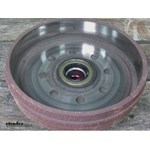
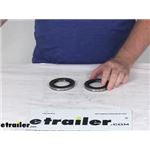


























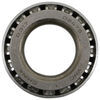








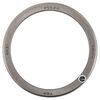









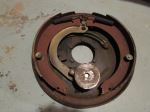
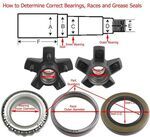
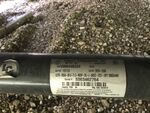
Louis
7/20/2023
Boat trailer has been in the water many times over the past year. We have to remember to grease the bearings about every three times it’s in the water. Your products have worked just fine. I was very pleased with the service and friendly advise given.